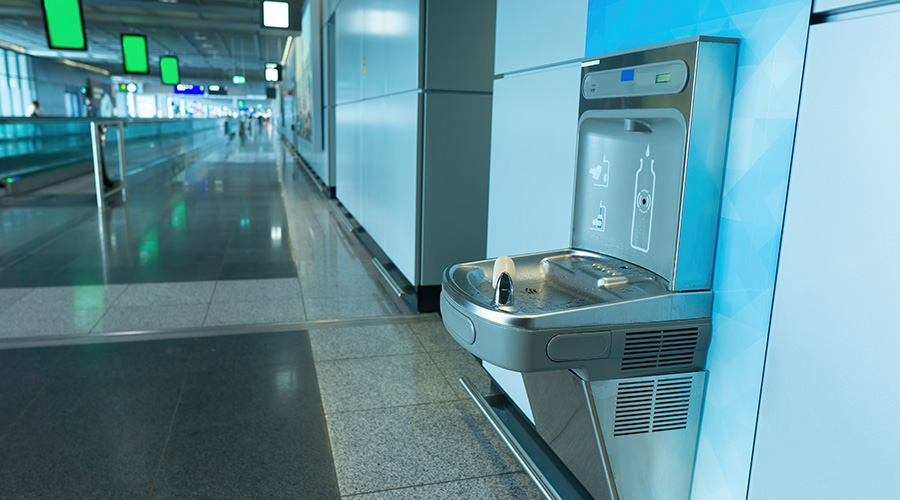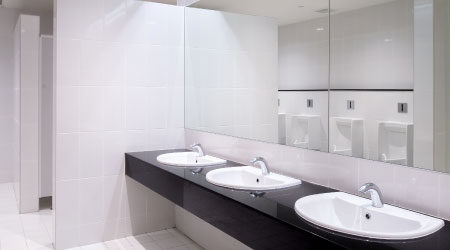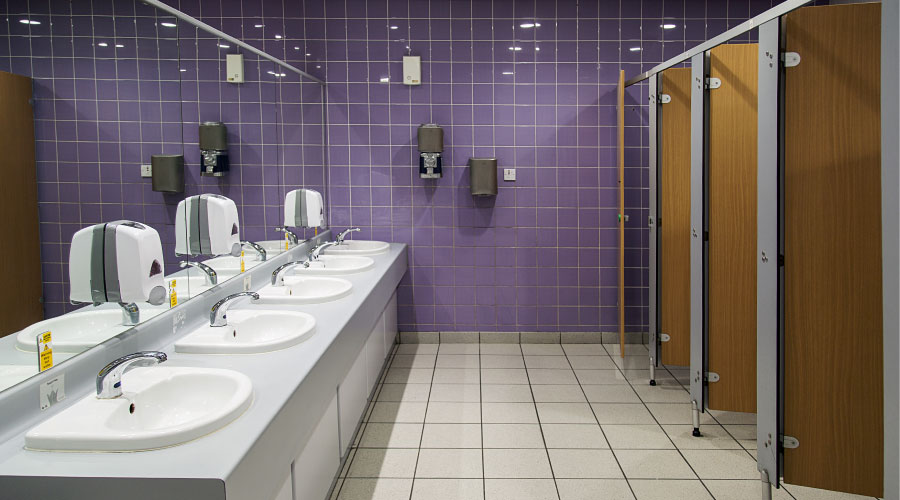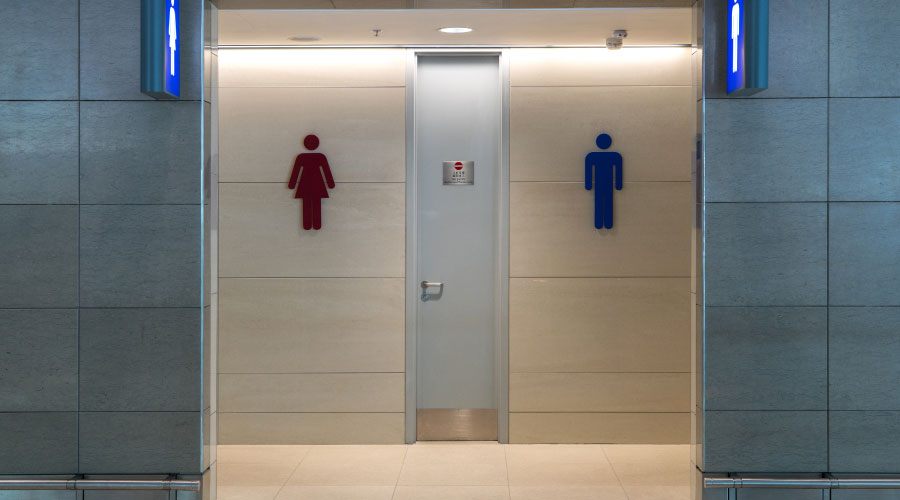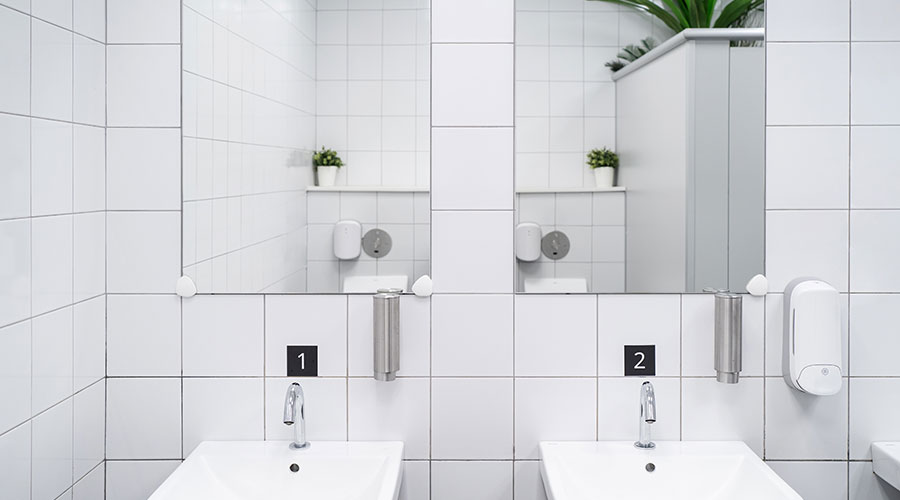Why Facilities are Choosing Bottle Fillers Over Fountains
Water bottle filling stations serve as capable replacement for water fountains in facilities.
The drinking fountain – also known as the water fountain or the water bubbler, depending on the region – is a common, if overlooked feature in many commercial and institutional facilities.
But in place of the water fountain, a trend has developed over the last few years. Water bottle filling stations are replacing the traditional, decades-old drinking fountains. The initial impact of installing water bottle filling stations was minimal, but they have become more popular in recent years, two industry experts say.
“The trend began slowly during COVID with drinking fountains being covered with caution tape and black garbage bags attempting to stem their use as we avoided public common touch surfaces,” says Justin Dunn, field marketing manager for Haws Corp. “After the pandemic, many who had used fountains or included them in their building projects began to simply prefer the bottle filler.”
Maintenance and engineering managers are growing more familiar with the new iteration of water fountains.
“The concept of water bottle filling stations is over 100 years old, but more recently, there has been an acceleration of replacing traditional drinking fountains with bottle fillers or replacing them with standalone bottle fillers,” says Scott McClelland, vice president of marketing and product manager for Sloan. “This trend has been driven by technological improvements to bottle fillers, including hands-free activation, filtration, water cooling and displaying the number of plastic water bottles saved.”
Environmental benefits
The impact of water bottle filling stations on sustainability cannot be overstated, says Stephanie Guttas, product manager with Oasis International.
“Considering the fact that just one bottle filler can literally save tens of thousands of plastic bottles from hitting the landfills, the impact is incredibly profound,” she says.
Discarded plastic products can take up to 1,000 years to decompose, according to the U.S. Environmental Protection Agency (EPA). More specifically, plastic water bottles can take roughly 450 years to decompose.
Americans purchase about 50 billion water bottles per year, according to earthday.org. That is an average of about 13 bottles per month for every person in the country, meaning the use of a reusable water bottle can save an average of 156 plastic bottles annually.
“Plastic use and minimization of that use in 2024 should be a consideration in every person’s life,” Dunn says. “Most bottle fillers include a bottle counter to keep those efforts top of mind, and overall, the use of reusable drinking cups or bottles has greatly reduced the amount of single-use plastic wastes that are collected in our landfills or litter wildlife ecosystems.”
Besides reducing plastic waste, bottle fillers can also curtail water waste because of a more precise delivery than drinking fountains, where sometimes not all of the water goes into a user’s mouth but instead down the drain.
Many bottle fillers feature counter displays that indicate the number of plastic bottles saved. Some also show the ounces of water dispensed, which helps track daily water consumption, McClelland says.
One manufacturer of water bottle filling stations says one station can save 15,000 bottles and 327 pounds of plastic from landfills each year.
“Filtered bottle filling stations are an innovative way to reduce harmful contaminants and provide cleaner, safer water, while also helping to minimize plastic bottled water in the environment and provide savings for facilities,” says Matt Lawrence, senior director of Product Management and Engineering for Zurn Elkay Water Solutions.
Health and wellness
Wellness and efficiency are among the benefits of water bottle filling stations when compared to traditional drinking fountains.
“Arguably, the greatest benefit is the immediate improvement in hydration and morale for occupants,” Guttas says. “Additionally, bottle fillers have a faster flow rate than bubblers, so they’re key for efficiently serving multiple users during break times or between meetings and classes.”
Another benefit is the touchless factor that sensor technology provides.
“Over the last few years, the public’s consciousness around hand hygiene has been greatly elevated, and bottle fillers provide a touch-free solution over drinking fountains, where handles can potentially be a breeding ground for germs and bacteria if not properly maintained,” McClelland says.
The stations also provide tangible benefits, including potentially lower supply costs and operational expenses from reducing single-use plastics, which help companies meet their environmental, social, and governance (ESG) goals, Guttas says.
Bottle fillers also have positive effects on the way people consume water in many ways, including understanding the water likely will be filtered as opposed to unfiltered tap water.
“When consumers know that cleaner drinking water will be available, they are more apt to carry reusable water bottles,” Guttas says. “Twenty years ago, reusable water bottles were adopted mostly by cost-conscious, highly active or eco-conscious consumers. The prevalence of bottle fillers has given these bottles almost a don’t-leave-home-without-it status, which benefits consumer hydration levels overall.”
McClelland cites the mobility that bottle fillers offer their consumers.
“Bottle fillers provide people with a resource to fill up on water as a means for continued hydration throughout their day, either at their workstation or in the classroom, as opposed to water fountains, where hydration is contained to just that station,” he says.
The presence of a bottle filler also can remind people to refill and work toward reaching a daily water consumption goal, Dunn says.
“I think for me and anyone else benefiting from a bottle filler in their office or for those who stumble across one in public, is that it really almost forces me to remember to fill up and hydrate throughout the day,” Dunn says.
Frank Rigas is a freelance writer based in Sheboygan, Wisconsin.
Related Topics:








